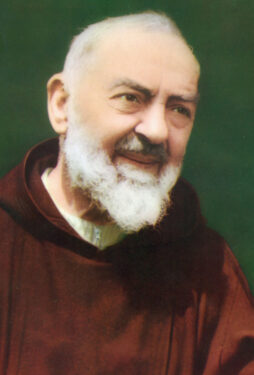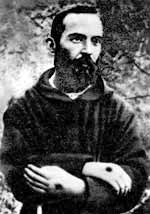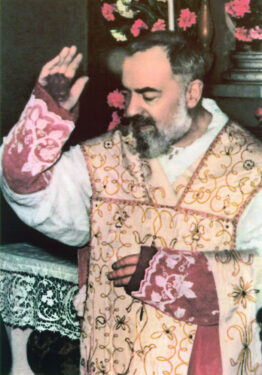
WINDSOR TERRACE — In late April 1968, Gino and Anna Dagri of Queens were honeymooning in their native Italy when she insisted they visit Padre Pio, the future saint known for bearing stigmata — wounds corresponding to the wounds of the crucifixion of Christ.
At first, Gino wasn’t interested, but he soon agreed to accompany his bride to Padre Pio’s church in the town of San Giovanni Rotondo, in southern Italy. Five months later, the future saint would die at age 81.
When the Dagris met him, he was in a wheelchair, and his body had reportedly stopped showing signs of the stigmata. But when he touched the newlyweds on their foreheads, Gino was overwhelmed with emotion.
“He prayed to God to protect us,” Gino said. “At that time, I was crying.”
“And he blessed our marriage,” Anna said.
The Dagris are longtime members of Our Lady of Hope Parish in Middle Village, Queens, where they have been very active in a Padre Pio prayer group.
Later this month, they hope to join others in venerating a Padre Pio relic at the Shrine Church of Our Lady of Mount Carmel-Annunciation Parish in Williamsburg, Brooklyn. There, the relic will be available for people to view before and after 11 a.m. Mass on Saturday, Sept. 18.
Deacon Philip Franco, who arranged for the hosting of the relic, said everyone is welcome at the Mass, especially those who are sick or suffering in any way, to be blessed with the relic. It is a bandage stained with blood from Padre Pio’s stigmata.
Deacon Franco explained that the relic is the property of the National Centre for Padre Pio in Barto, Pennsylvania, and it can be categorized as both a first-class and second-class relic.
A first-class relic, he explained, is usually a fragment of the saint’s body, but this bandage fits that criterion because it is stained with the Padre’s blood. A second-class relic is an item that was owned or frequently used by a saint, so the bandage also fits that definition.

The relic comes with a certificate of authenticity, said Deacon Franco, who explained: “This has been verified by the Vatican and by San Giovanni Rotondo, where Padre Pio lived, that this is in fact a legitimate relic; it really was his bandage.”
The history of Our Lady of Mount Carmel parish is linked to the legacy of Italian immigrants who settled in Williamsburg in the late 1800s. Therefore, Deacon Franco said, the relic’s presence at the Saturday Mass will be of great interest, especially to parishioners of Italian heritage.
“Survey after survey in Italy, and among Italians, has Padre Pio as the most popular and sought-after saint,” he said.
At about the same time Italian immigrants were settling in Williamsburg, the future saint, Francesco Forgione, was born (1887) in Pietrelcina, Italy. He grew up suffering a wide range of illnesses, including typhoid fever, but he persevered and was ordained a Franciscan friar.
During the early part of the 20th Century, Padre Pio began to show the stigmata, experiencing the pain and bleeding of the wounds. He became known for performing healing miracles and for overseeing the establishment of a hospital in San Giovanni Rotondo — Casa Sollievo della Sofferenza, or in English, “Home for Relief of Suffering.” Today it is a 900-bed research hospital.

Padre Pio underwent several Vatican-commissioned investigations to settle whether his stigmata wounds were authentic or a hoax, and all but one agreed that it was real, Deacon Franco said.
The friar was canonized a saint in 2002 by Pope John Paul II.
“He’s known as a saint of miracles, a healer,” Deacon Franco said. “He’s the patron saint of those with various forms of illnesses and anxiety.”
“It’s an interesting case,” he added. “He’s the only priest in the history of the Church to have what we would consider a verified stigmata. Unfortunately, there have been some people over the years who claimed to have the stigmata, and it turned out to be fraudulent.
“But Padre Pio seemed to have all the wounds,” not only those in the hands or feet.”
For more information about the National Centre for Padre Pio, visit padrepio.org.
